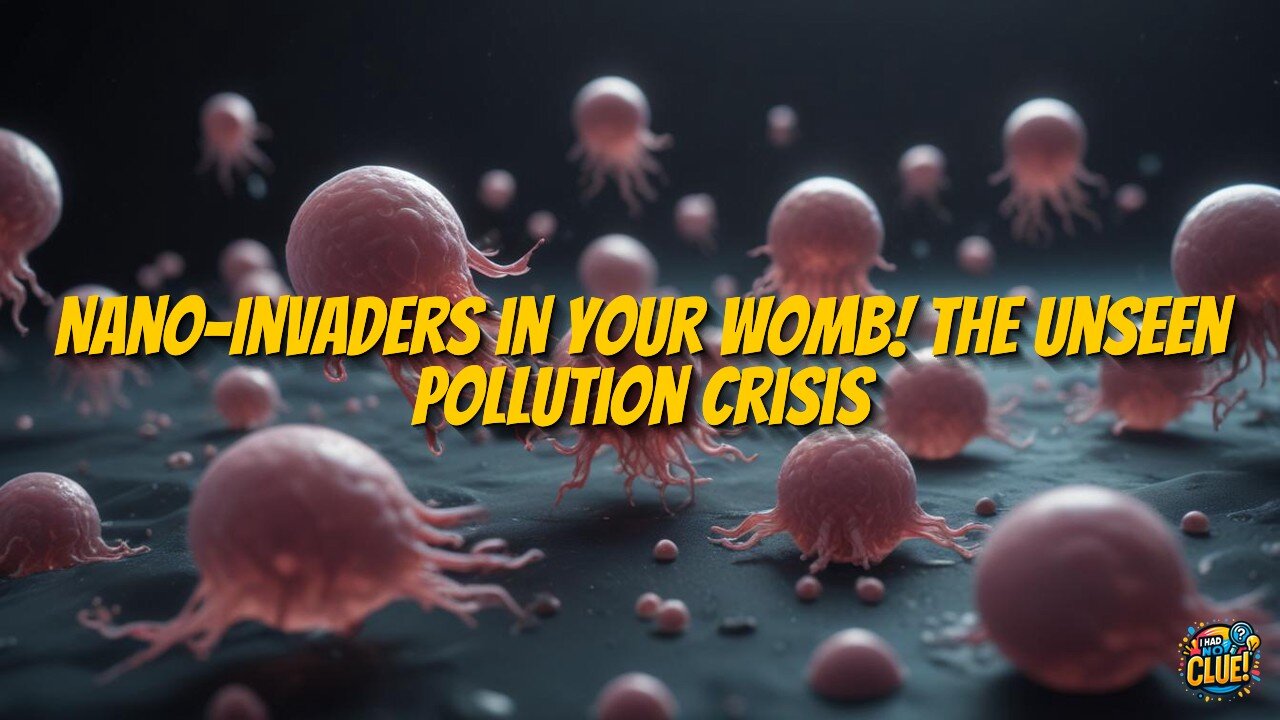Premium Only Content

Nanoplastic Pollution Reaches Placental Barrier: New Findings
A groundbreaking study published in the Environmental Science & Technology journal has provided the first comprehensive evidence that nanoplastics—particles smaller than 1 micrometer—can cross the human placental barrier. Researchers from the University of New Mexico and Utrecht University identified an average of 17 different plastic types in placental tissues from 62 recent mothers. Unlike previously discovered microplastics, these nanoplastics are small enough to interact with cellular mechanisms and penetrate cell membranes. The study revealed that these particles act as "molecular Trojan horses," carrying environmental contaminants including industrial chemicals, pesticides, and pharmaceutical residues directly to developing fetuses. Common polymers detected included polyethylene, polypropylene, and polyethylene terephthalate from everyday consumer products. Multiple exposure pathways were identified, including inhalation (particularly in poorly ventilated areas), consumption of food and beverages from plastic containers, and use of certain cosmetics. While the health consequences aren't yet definitively established, the findings have prompted a longitudinal follow-up study and catalyzed multidisciplinary efforts to develop exposure-reduction guidelines and improved detection technologies.
-
 35:24
35:24
The Rubin Report
20 hours agoThe Simple Rules to Fight Crime Blue Cities Choose to Ignore | Jay Collins
22.5K15 -
 LIVE
LIVE
FyrBorne
10 hours ago🔴Warzone M&K Sniping: Modern Warfare Weapons That Still Cook in 2025
3,284 watching -
 17:40
17:40
Actual Justice Warrior
1 day agoBlack Mob ATTACKS Conservatives On Campus
79.7K173 -
 2:04:41
2:04:41
MG Show
23 hours agoJames 'Dirty Cop' Comey Indicted; A Plan to Starve the American People
62.8K21 -
 9:11
9:11
MattMorseTV
19 hours ago $23.30 earnedVance just DROPPED the HAMMER.
147K86 -
 10:16
10:16
GritsGG
20 hours agoBEST Controller Settings for Warzone! Rank 1 Player's Settings!
41.8K4 -
 2:13:30
2:13:30
Side Scrollers Podcast
1 day agoUK Introduces MANDATORY Digital ID + Dallas ICE Shooting BLAMED on Gaming + More | Side Scrollers
163K24 -
 10:34
10:34
The Pascal Show
19 hours ago $8.32 earnedFOOTAGE REVEALED! Images Of Celeste Rivas Exposed Before Her Disappearance From Home Running To D4vd
53.3K3 -
 LIVE
LIVE
Lofi Girl
2 years agoSynthwave Radio 🌌 - beats to chill/game to
284 watching -
 4:23:47
4:23:47
MissesMaam
14 hours ago*Spicy* Friend Friday with Mally_Mouse and Friends!! 💚✨
339K19